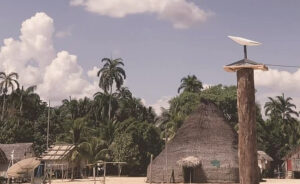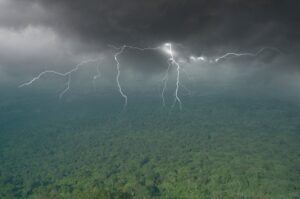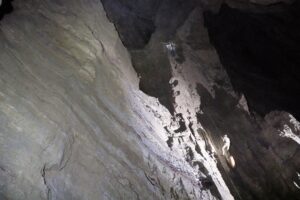Newly discovered Stone Age carvings in western Namibia are so detailed that expert trackers have been able to identify the species, age, and gender from them.
The Doro Nawas site sits in a rocky basin with sandstone walls and dates back around 5,000 years. Sandstone is a perfect medium for creating engravings. Engravings of prints have been found on many prehistoric rocks around the globe, but the exquisite detail sets these apart.

Map of the research area. Photo: T. Lenssen-Erz et al.
The carvings so fascinated archaeologist Andreas Pastoors that he asked three local trackers to help him study the artwork. Tsamgao Ciqae, Ui Kxunta, and Thui Thao have worked with researchers many times before, as hunters.
The trio studied 513 different prints and identified 407 animals from 39 different species and approximately 60 bird species. The engravings include 106 human footprints. The trackers identified 88 of these as children, and 15 as adults. Just three were unidentifiable.
The engravings were so detailed that for over 90% of them, the trackers could also identify the sex and general ages of everything they were looking at.

Some panels are particularly rich with animal track engravings. Photo: T. Lenssen-Erz et al.
Individual tracks, not generic shapes
The engravings hint at the preferences of the engraver. Giraffes, kudus, springboks, and rhinos were the most common animal tracks depicted. Most prints also belonged to male adults rather than females or juveniles. Each print was individual, they were not generic representations of the species.
“The engravings on Namibia’s rock faces…provide a window into a past where animals and humans coexisted, and where the artists differentiated cultural patterns in their representation,” the study authors concluded.
Many of the species, such as baboons, zebras, and warthogs, still live in this region today. Other species, including bush pigs and open-billed storks, usually occur hundreds of kilometers away, where there is more water today.
This suggests that either the climate has become drier over time or that whoever created the artwork traveled around the region. Pastoors maintains that the climate in this area has remained fairly constant and believes that the artist roamed broadly within Namibia. The team also believes that the prints likely served to teach others how to track and identify the various species.

Depictions of giraffes and ostriches. Photo: Photo: T. Lenssen-Erz et al.





